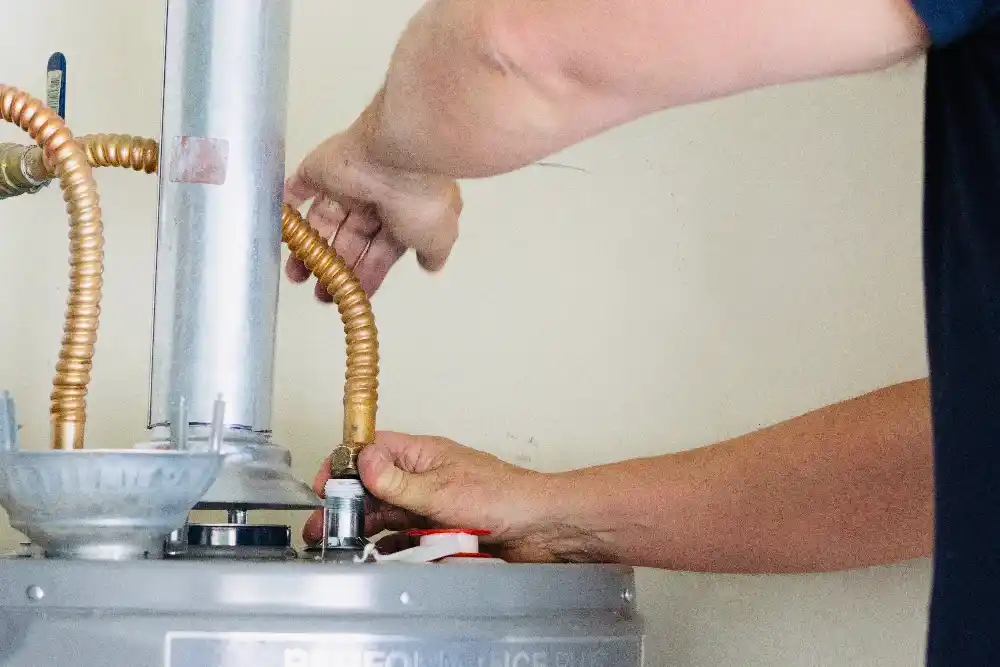
Tankless water heaters are great for providing unlimited hot water, but they require frequent maintenance to stay running properly. Over time, minerals from hard water accumulate within, impairing performance. If you don’t flush your tankless water heater periodically, it may struggle to heat water correctly, resulting in increased energy costs and serious damage.
Flushing your system is necessary, but don’t worry—it’s easier than you think! In this article, we’ll show you how to flush a tankless water heater, solve typical flushing difficulties. And explain the benefits of regular maintenance of Water Heater.
What Tools Do You Need to Flush a Tankless Water Heater?
Before you begin, acquire the appropriate tools and supplies:
✔ Submersible pump helps circulate the descaling solution.
✔ Use white vinegar or a descaling solution to break down mineral accumulation within the heater.
✔ Two hoses connect to the intake and exit valves.
✔ A five-gallon bucket holds the cleaning solution.
✔ Adjustable wrench to loosen and tighten valve connections.
✔ Wear rubber gloves to protect your hands.
Once you have everything, proceed to flush the tankless water heater step by step.
How To Flush A Tankless Water Heater
Turn Off Power and Gas Supply
Safety first! Turn off the power to your water heater. If you have an electric unit, turn the breaker off. For gas models, switch off the gas valve. This helps to prevent mishaps while working.
Connect the Hoses and Set Up the Circulation System
Locate the service valves (typically blue for cold water, red for hot water). Connect one hose to the cold water valve and place the other end in a five-gallon pail. Connect the other hose to the hot water valve and then to the pump in the bucket.
Circulate the Descaling Solution
Put four liters of white vinegar or a professional tankless water heater flushing solution in the bucket. Turn on the pump and let it run for 45 minutes to an hour. This technique eliminates mineral accumulation in the system.
Rinse the System Thoroughly
After flushing, shut off the pump and unhook the hoses. Then, open the cold water valve and allow clean water to flow through the device for around 5-10 minutes. This step removes all flushing solutions from the heater.
Reconnect and Restart Your Tankless Water Heater
Close all service valves and reconnect the water heater. Turn the electricity and gas back on. To ensure that everything is in working order, turn on a hot water tap in your home. If the tankless water heater flushing was effective, you should see a strong, consistent stream of hot water.
How To Troubleshoot Common Flushing Issues
Dealing with Stubborn Mineral Deposits
If flushing the tankless water heater does not completely remove the buildup, repeat the operation with a stronger descaling solution. For heavy deposits, you may need to soak the heat exchanger longer before washing or simply contact us for tankless water heater services.
Addressing Leaks After Flushing
If you observe water leaks around the service valves, make sure the hoses are correctly reattached. Tighten any loose connections with a wrench, but do not overtighten, since this might harm the fittings.
What to Do If the Unit Fails to Restart
If your heater does not come back on after flushing, check the circuit breaker or gas supply. Some models additionally require a reset; see the handbook for details. If the problem persists, a skilled plumber can assess the situation.
How Often Do You Need to Flush a Tankless Water Heater?
The appropriate flushing schedule is determined by the quality of your water. If you have hard water, flush the tankless water heater every 6–12 months. For households with softer water, once every 12-24 months is sufficient.
Ignoring maintenance for too long might result in decreased efficiency, increased energy expenditures, and even system failure.

The Benefits of Regular Water Heater Flushing
Increased Efficiency and Energy Savings
A clean water heater operates efficiently and consumes less energy. Flushing keeps mineral accumulation from stressing the system, resulting in decreased utility expenditures.
Extended Lifespan of Your Unit
Regular tankless water heater flushing eliminates scale, which can harm the heat exchanger. With appropriate maintenance, your heater may endure for more than 20 years.
Consistent Hot Water Supply
Have you ever observed shifting water temperatures? Mineral deposits inside the heater are typically the cause of this. Flushing your tankless water heater guarantees that you get consistent, reliable hot water every time you turn on the tap
When Should You Call a Professional Plumber for Help?
While flushing a tankless water heater and installation is a simple DIY project, some situations require professional assistance. Contact a plumber if your water heater has not been cleansed and has substantial buildup. They can also help with:
✔ Error codes or low water pressure after flushing.
✔ Leaks or weird noises from the unit.
✔ The heater does not restart after troubleshooting.
Wally Blanton Plumbing Inc. specializes in tankless water heater maintenance, repair, and installation. If you want experienced assistance, we are here for you! Call us now to schedule expert water heater flushing and keep your system functioning like new.
